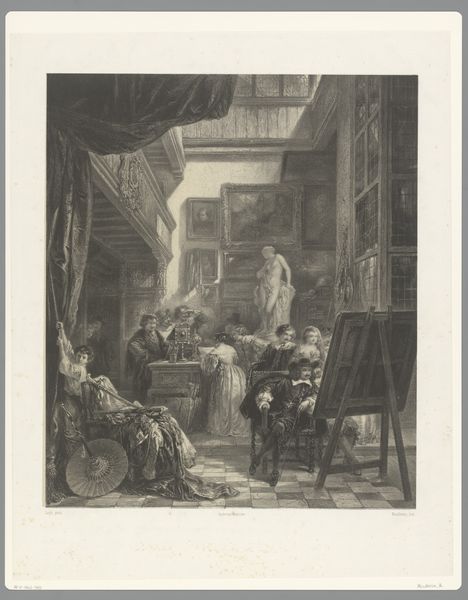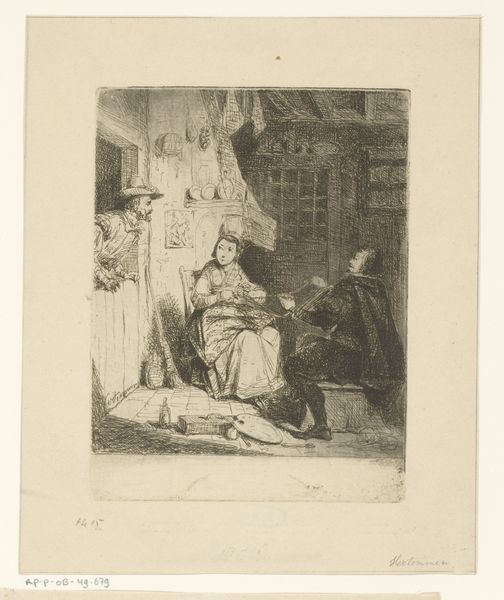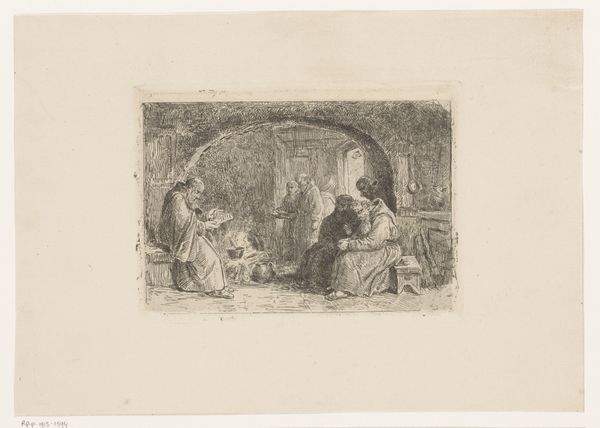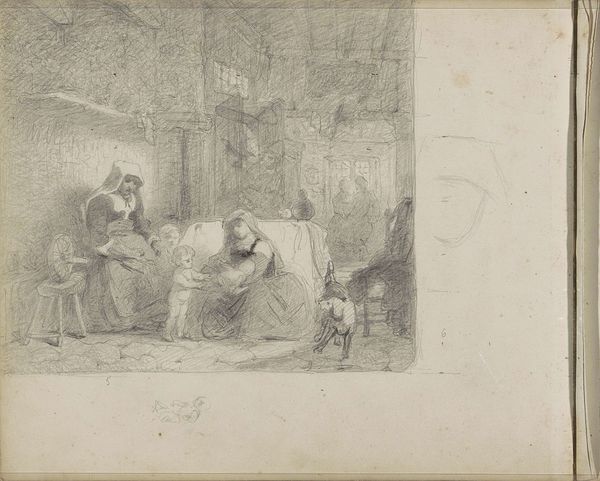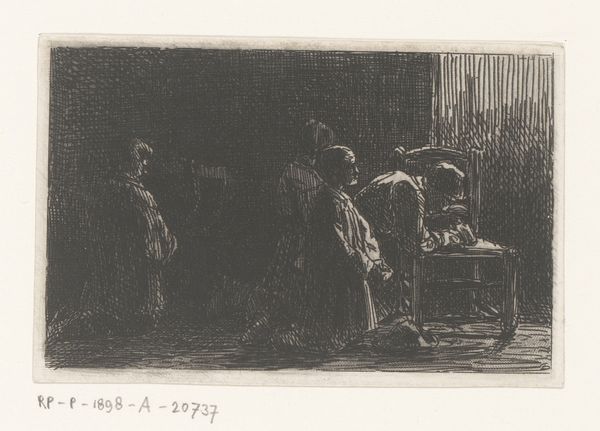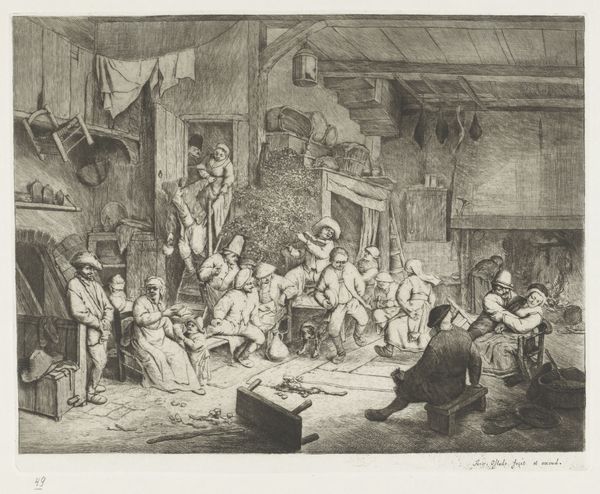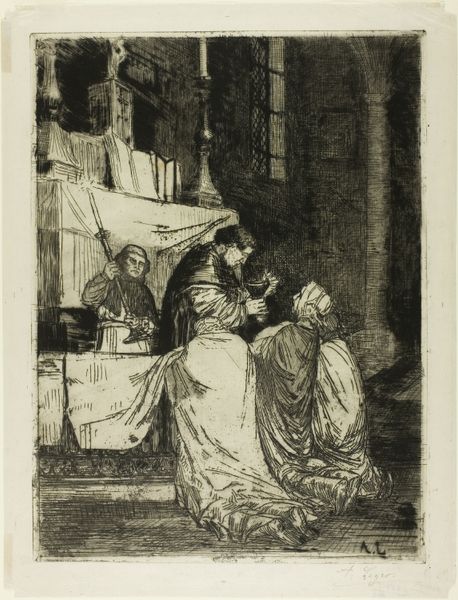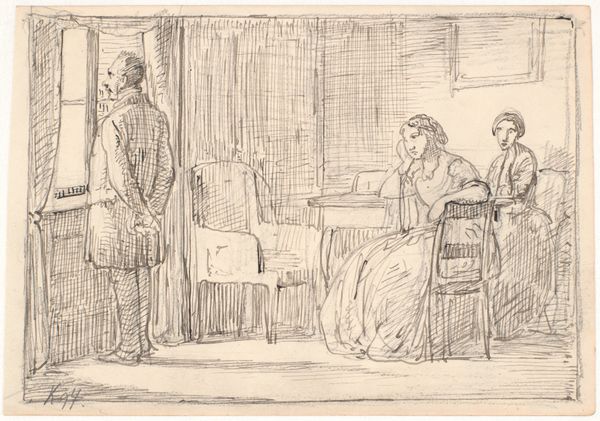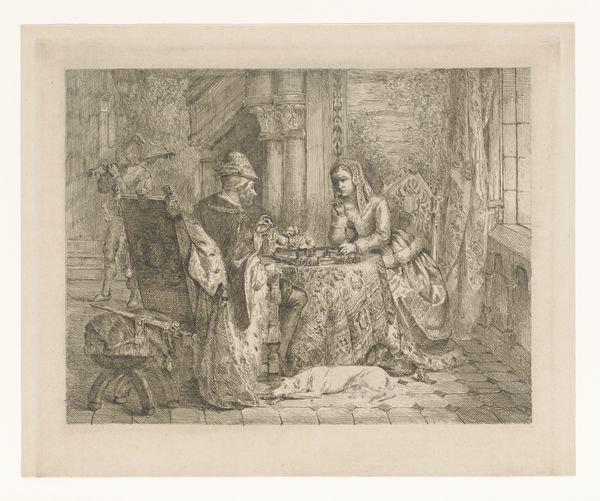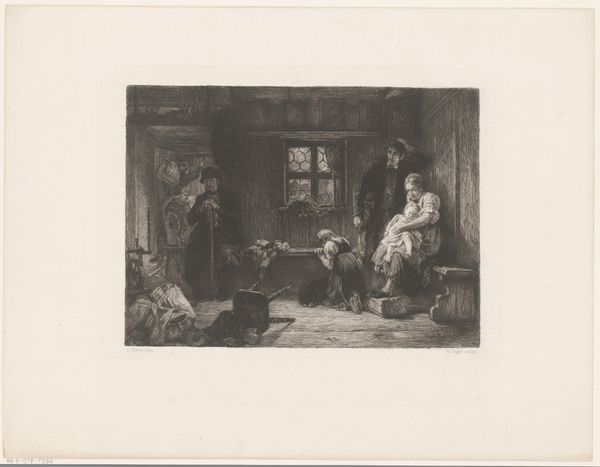
drawing, print, etching, paper
#
drawing
# print
#
etching
#
paper
#
france
#
genre-painting
#
realism
Dimensions: 415 × 679 mm (image); 422 × 687 mm (plate); 478 × 742 mm (sheet)
Copyright: Public Domain
Curator: Alphonse Legros, a French artist, crafted this print, titled "Procession in a Spanish Church," around 1861. The medium is etching on paper, now housed here at the Art Institute of Chicago. Editor: My first impression? This print has such a powerful use of light and shadow; it immediately creates a contemplative, almost somber atmosphere. Curator: Indeed. Consider the political and social turmoil of 19th-century Europe—France, in particular. Religious processions often became displays of power and traditional order during a period of increasing secularism and calls for social justice. Legros might be prompting questions about the church’s role amidst this evolving landscape. Editor: Perhaps, but look closer at the formal construction. The artist's focus seems to be the composition as much as any statement. See how Legros has used the contrast of light and dark to divide and unite the image? Your eye is led through a distinct journey via its arrangement. The use of shadow gives form, allowing it to be the guide as the artist pulls your gaze from the mundane activities on the left into the grand ceremonial space in the center. Curator: I see that, but can’t ignore how this image can also be read within the broader discourse of national identity and representation? "Spanish Church" -- the title suggests Legros might be commenting on the differences between French and Spanish Catholicism, subtly pointing to cultural and political distinctions during a time of rising nationalism. He isn't French for no reason. He certainly would've had a perspective. Editor: An interesting angle. But observe how the very visible strokes give shape to the architectural forms. And it's all done with a restricted range of tonalities. What are you supposed to think looking at these things together? Semiotically, we must ask, what do these dark swathes, that are used for shading but also as shape-makers, symbolize in Legros' grammar of form? Curator: Ultimately, the work feels open-ended. The act of portraying a procession implies a communal, shared experience, yet Legros renders it with a stark, almost detached perspective. Is he inviting us to reflect on the individual’s place within institutional structures? Editor: Or perhaps it’s about the purely visual interplay of forms—lines, textures, the distribution of light. Legros, to me, focuses the viewers eyes on an almost sculptural examination of the depicted figures. Curator: On my end, the piece has demonstrated the capacity to examine how tradition intersects with questions of power and identity. Editor: I suppose it is a fine example of how a study in aesthetics may hold cultural meaning depending on its reader.
Comments
No comments
Be the first to comment and join the conversation on the ultimate creative platform.
